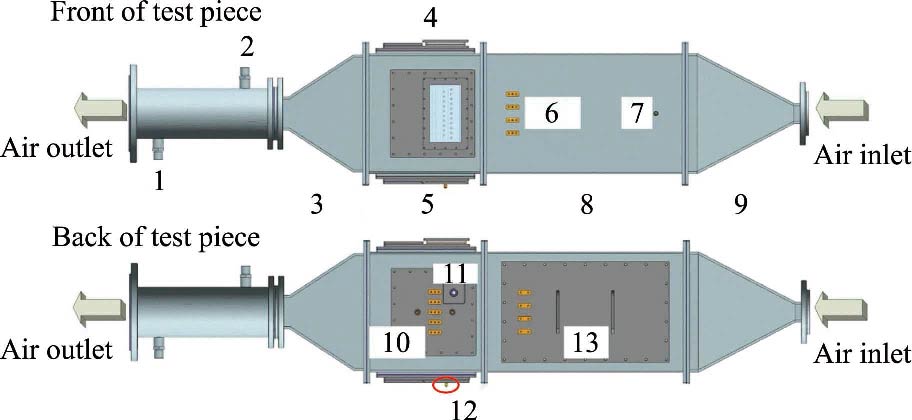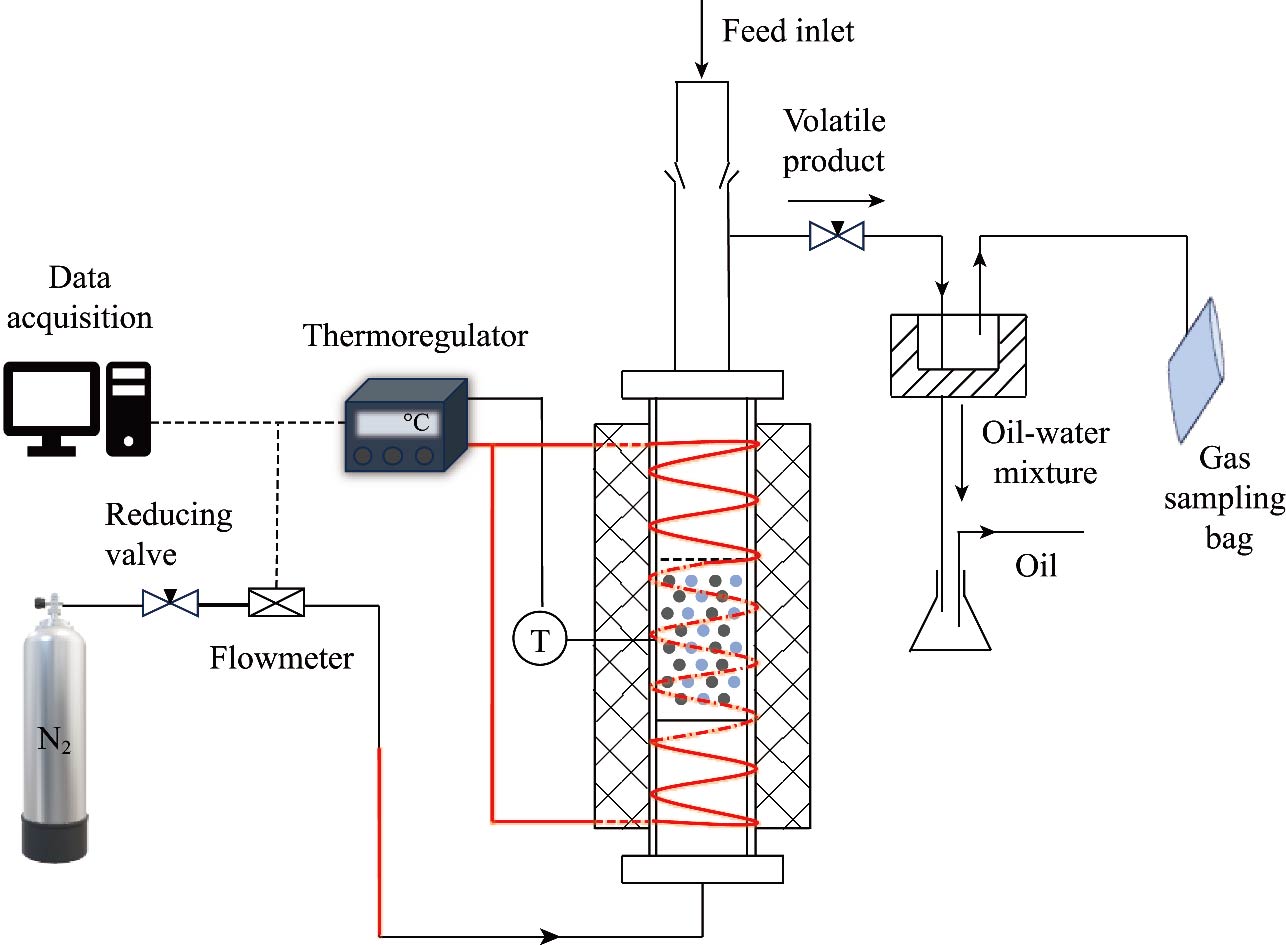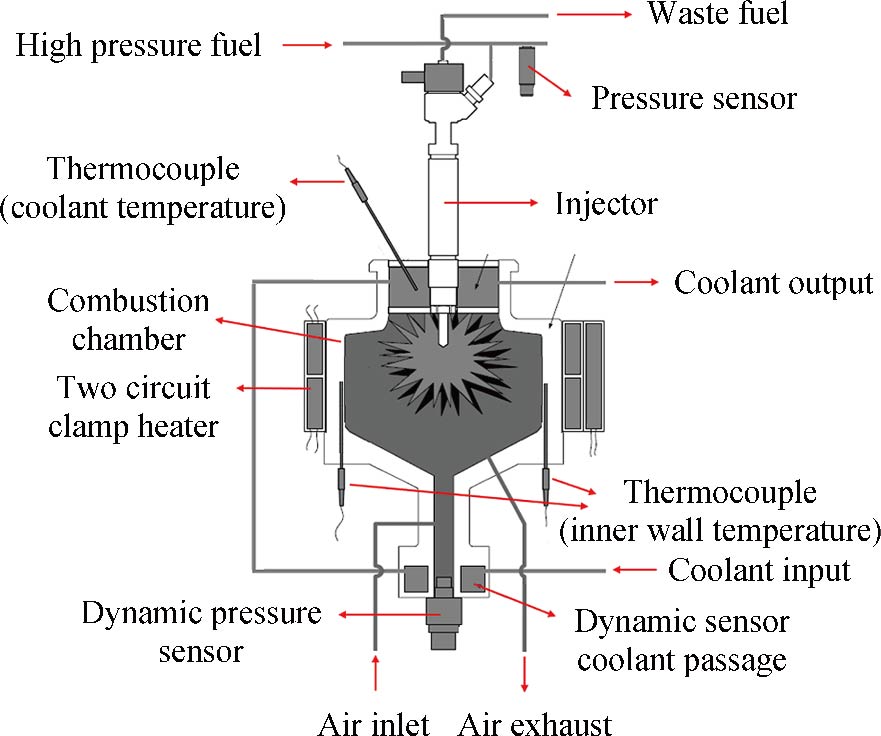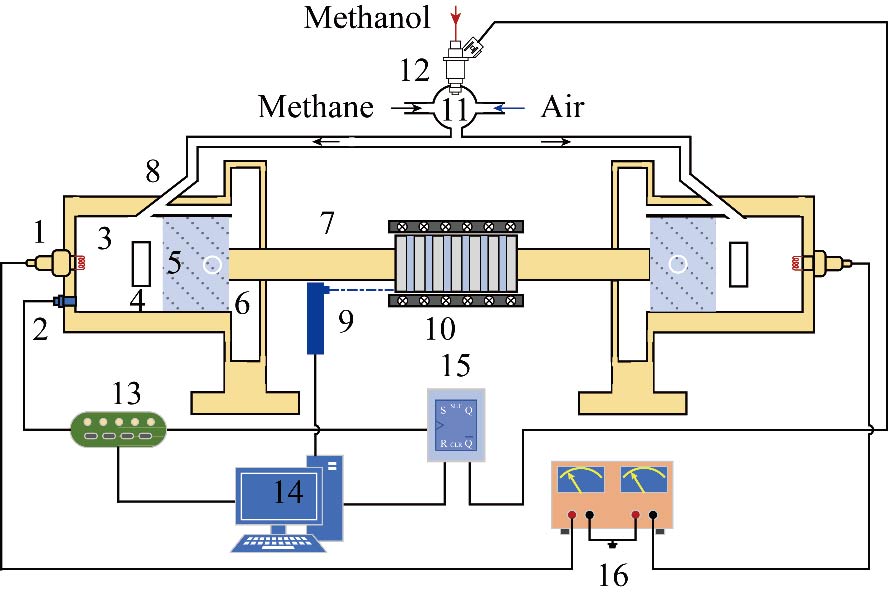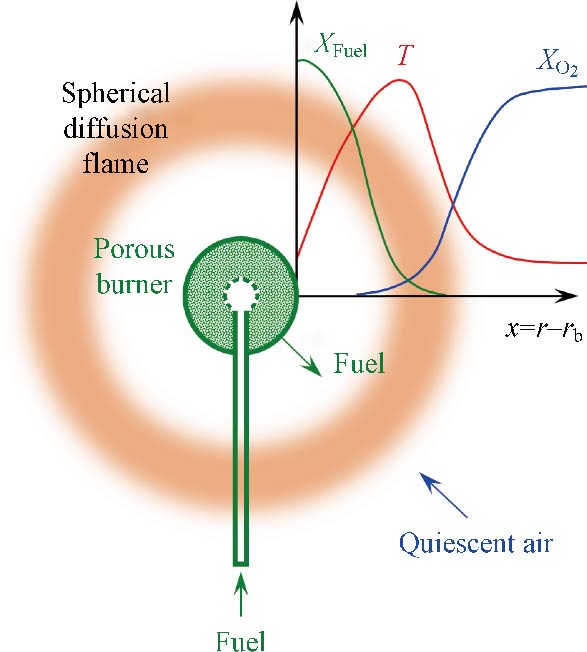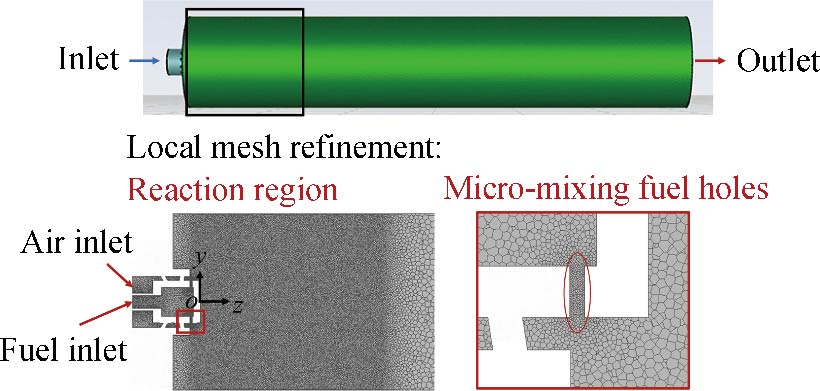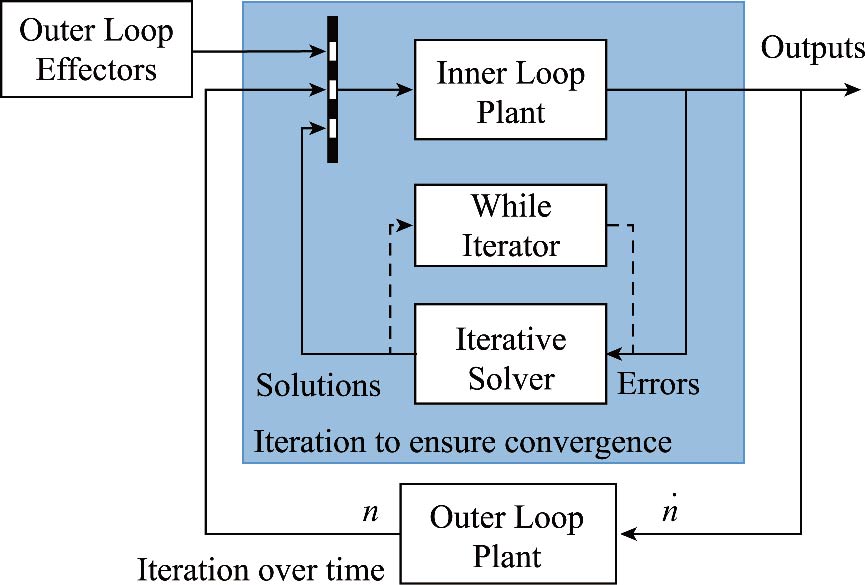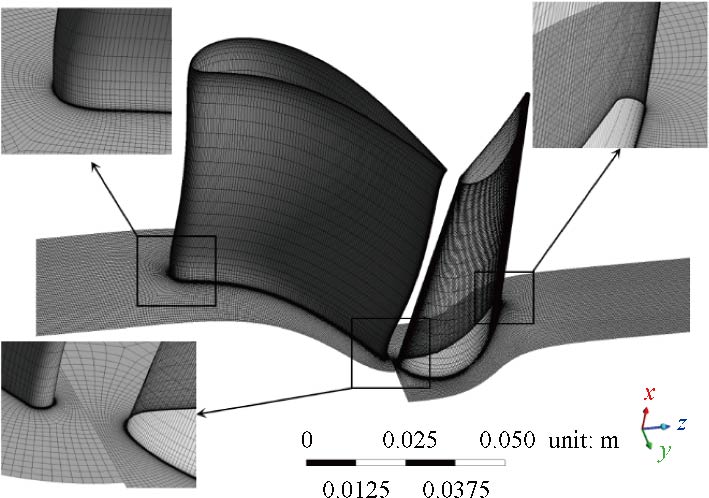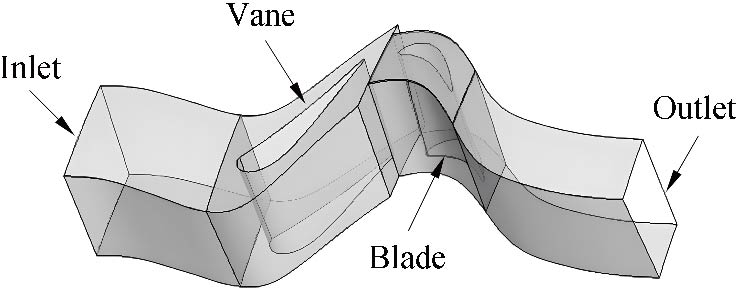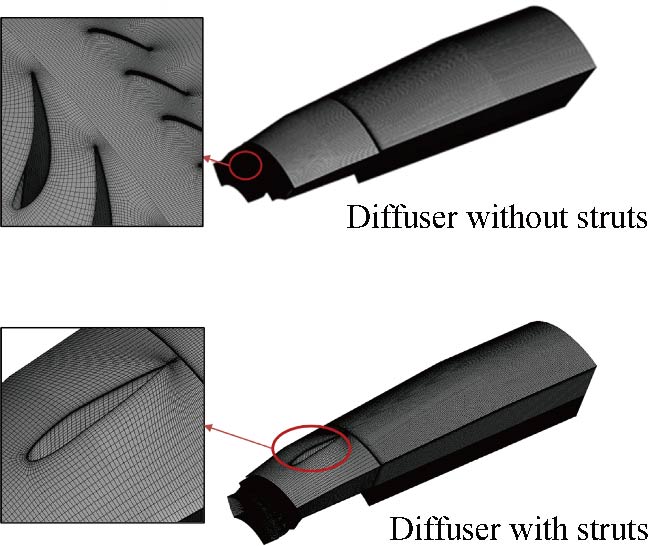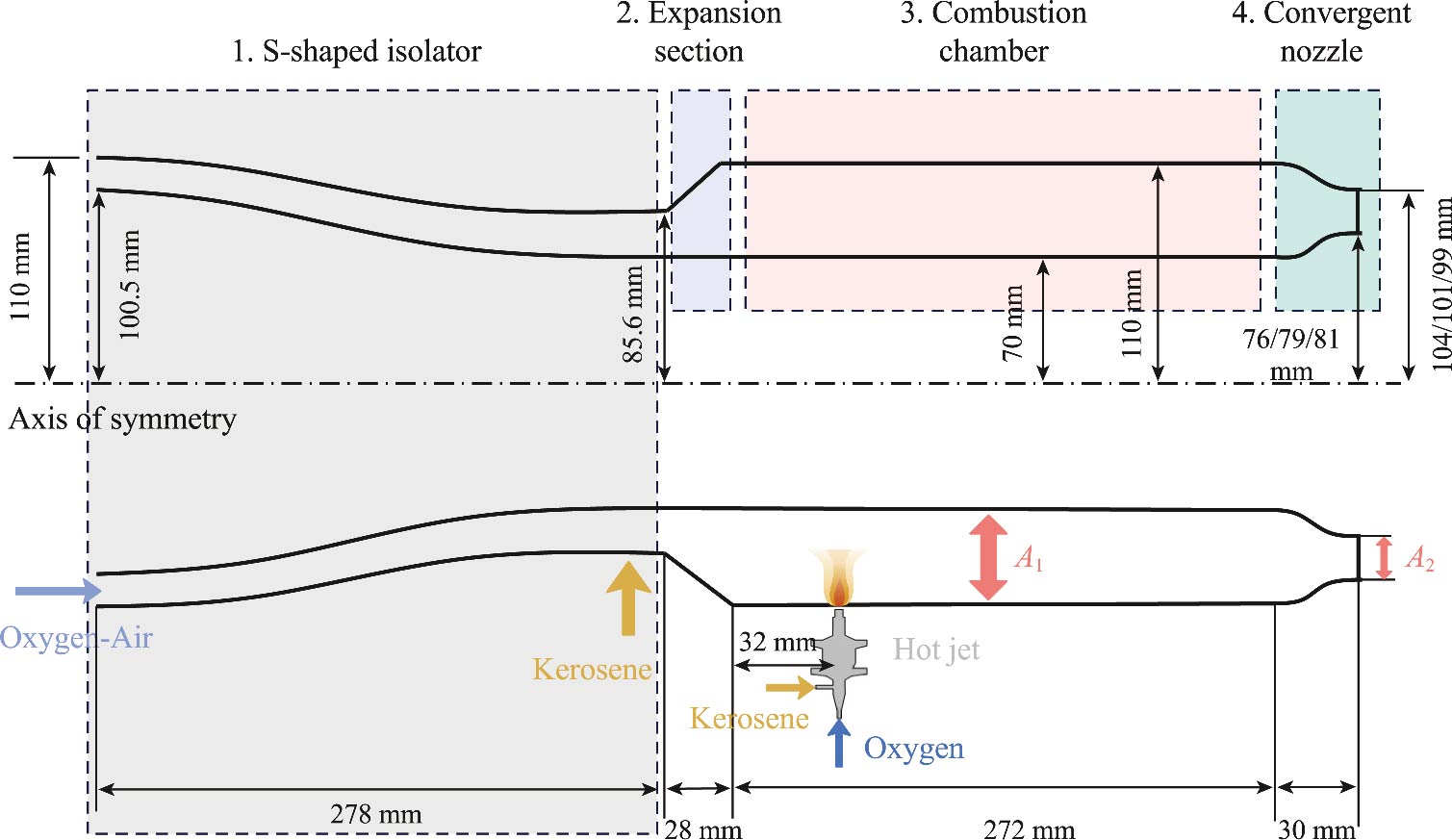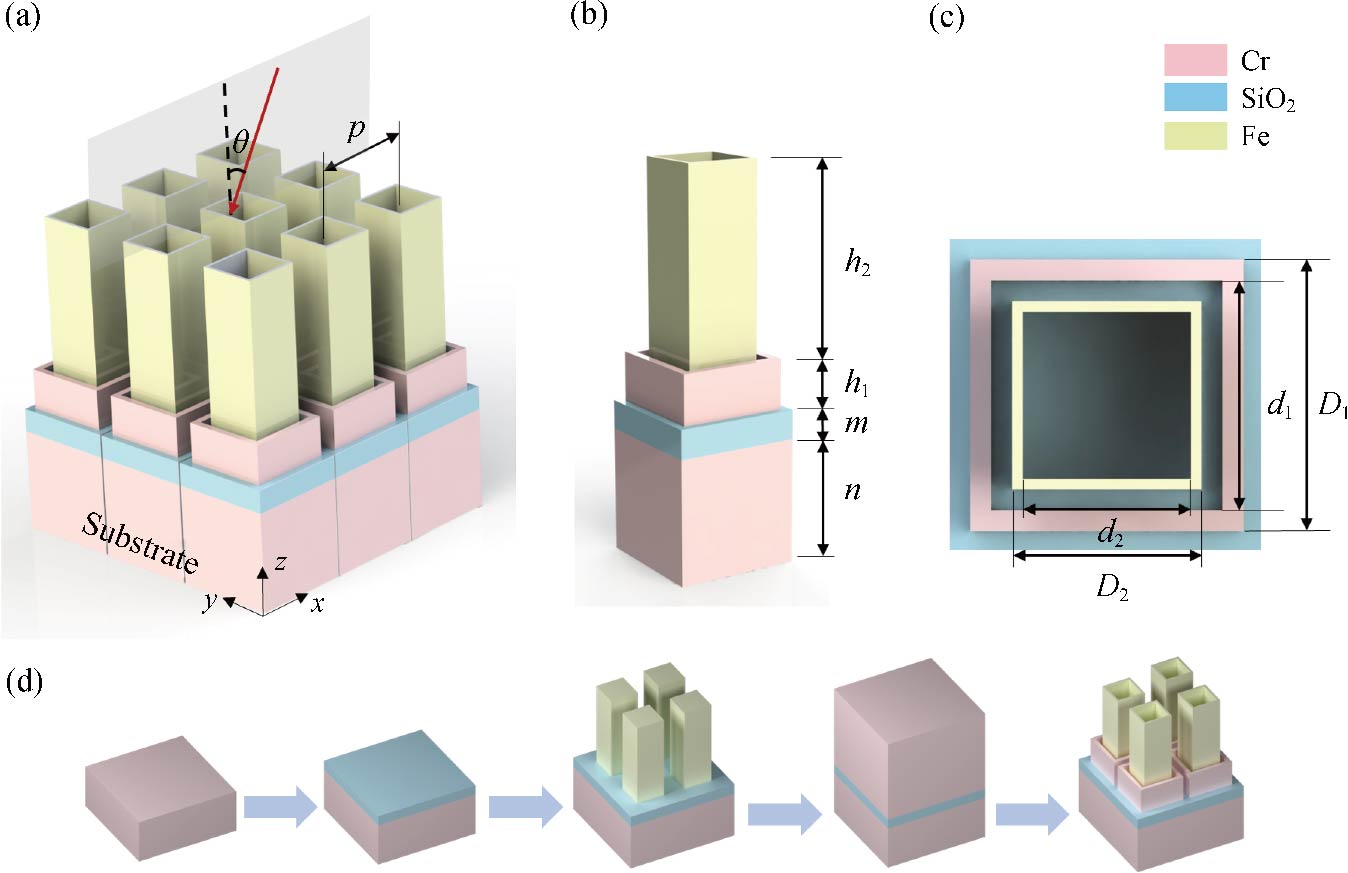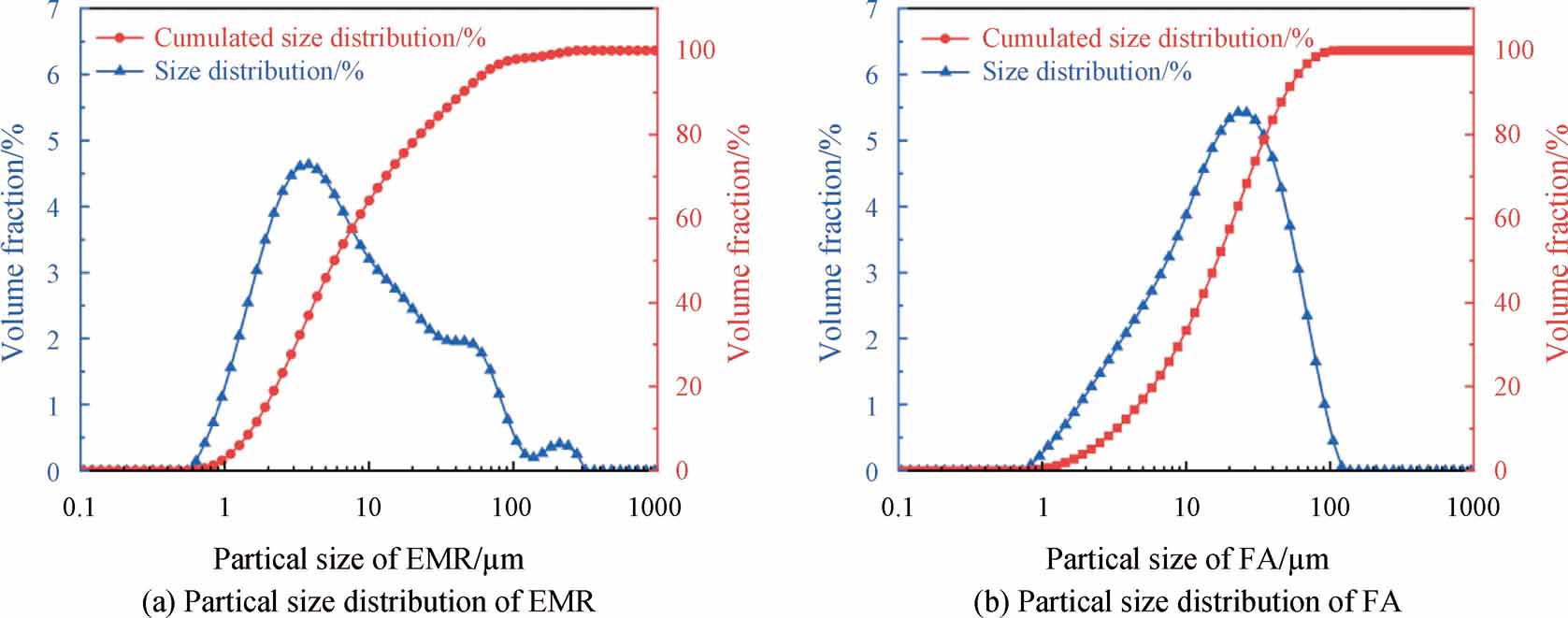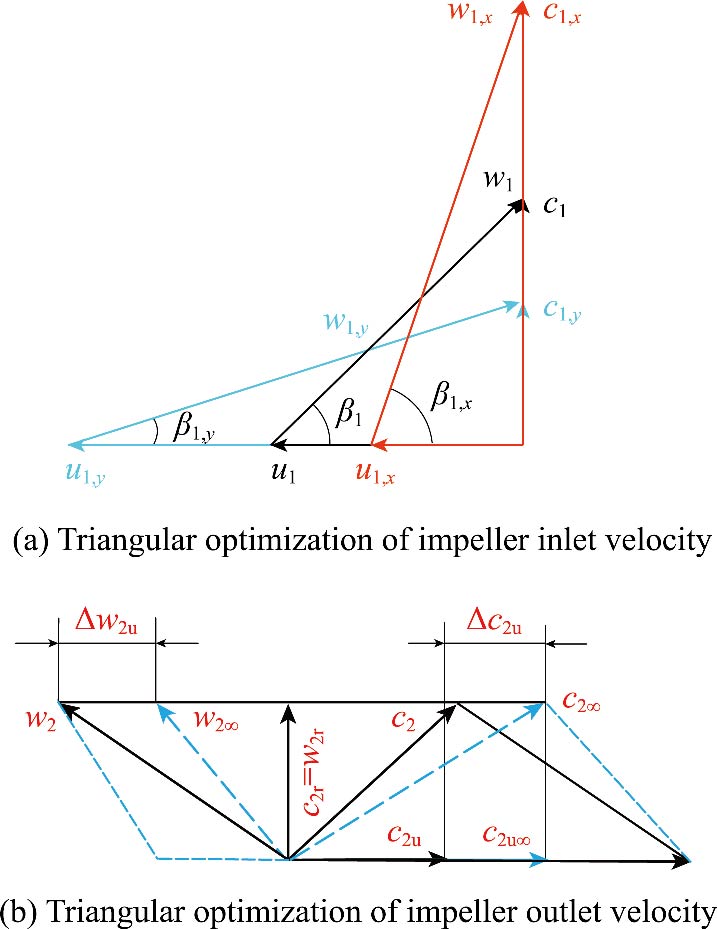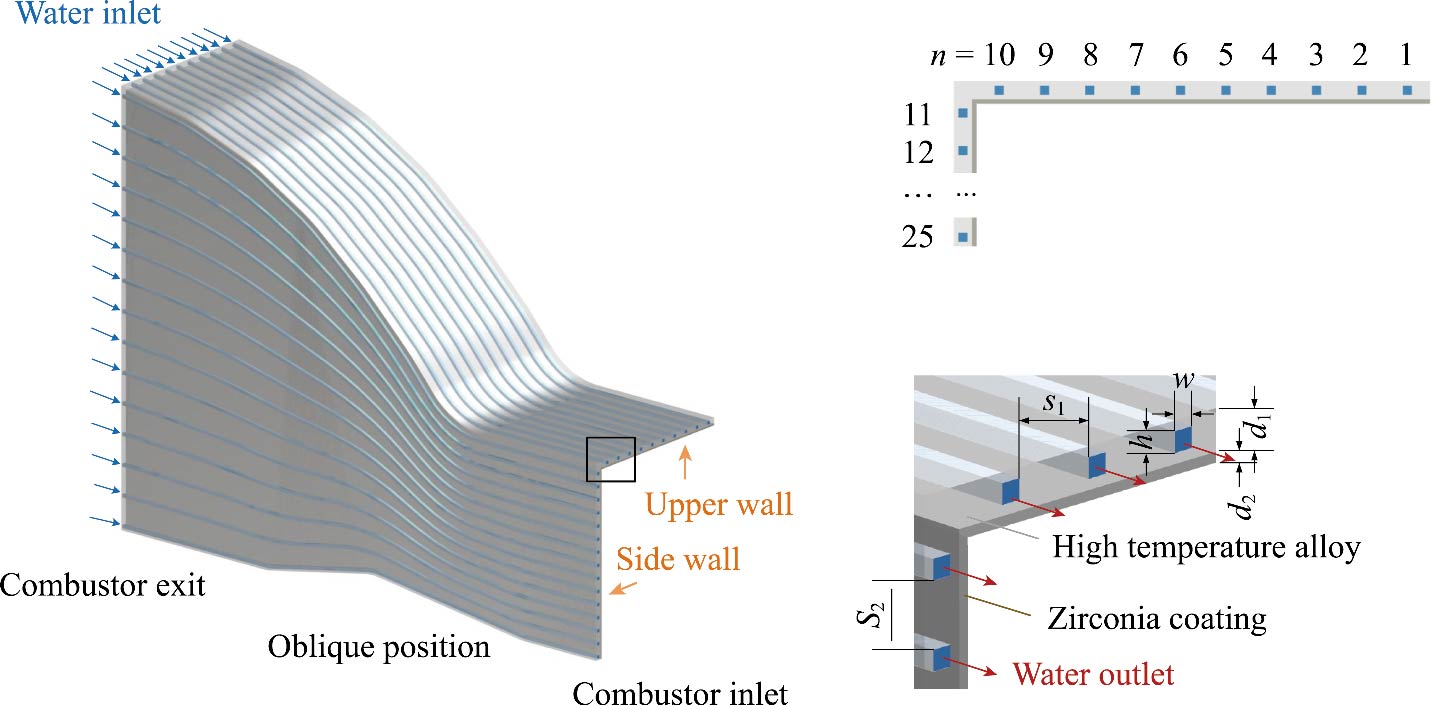26 August 2025, Volume 34 Issue 5
-
Select all|
-
Journal of Thermal Science. 2025, 34(5): 1569-1582. https://doi.org/10.1007/s11630-025-2139-9The impact of turbine guide vanes on a three-dome combustor’s lean blowout limit and blowout process was experimentally investigated. The parameters studied include the presence of the turbine guide vanes or not and the blockage ratio of turbine guide vanes. It is shown that the presence of turbine guide vanes and an increase in the blockage ratio increase the lean blowout fuel-to-air ratio. From the images of flame spontaneous emission captured by the high-speed camera, the coupling of the combustor with turbine guide vanes can alter the sequence of the blowout among the three domes, and localized tiny flame lumps have been observed to develop into larger flames during lean blowout. However, flames within the combustor are established independently near blowout, and no reignition is observed. Furthermore, the turbine guide vanes have been found to shorten the duration of the blowout process and enhance the likelihood of blowout by increasing the lean fuel-to-air ratio.
-
Effect of Key Parameter Variations on Coal Consumption Rate of Coal-Fired Units in Deep Peak-ShavingJournal of Thermal Science. 2025, 34(5): 1583-1598. https://doi.org/10.1007/s11630-025-2150-1The green transition of power systems relies on the accurate measurement of the economic cost associated with the deep peak-shaving process in coal-fired power plants. To evaluate the variation in the coal consumption rate during low-load operation, a model of a 300 MW coal-fired unit was established, with less than 1% deviation from the actual operation value. The results indicate that the coal consumption rate at 20% load can increase to 1.48 times the full-load value. When the excess air coefficient is reduced by 0.3 at low-load conditions, between 40% and 20% load, the exhaust gas temperature is reduced by approximately 5°C, leading to a decrease in the coal consumption rate. In addition, elevating the steam temperature to the design value can reduce the coal consumption rate by 6% to 13%, and increase the inlet temperature of Selective Catalytic Reduction (SCR) process by 10°C. Improving the turbine efficiency during peak-shaving significantly reduces the coal consumption cost, and the enhancement of the mean steam temperature is an efficient approach. This study offers a theoretical reference for the retrofitting, design and economic operation of coal-fired units in peak-shaving, thereby supporting energy system transitions.
-
Journal of Thermal Science. 2025, 34(5): 1599-1611. https://doi.org/10.1007/s11630-025-2174-6Waste plastics, with their high hydrogen-to-carbon (H/C) atomic ratios, can act as hydrogen donors during coal pyrolysis, thereby enhancing tar yield and quality. Thus far, a study has been conducted on the co-pyrolysis characteristics of coal and waste plastic, along with a rapid prediction method for tar yield. An experimental system for the co-pyrolysis of coal and waste plastic is established to examine the distribution patterns of pyrolysis products, such as gas, tar, and char, at varying temperatures and coal-to-waste plastic ratios. The results indicate a significant synergistic effect during the co-pyrolysis of coal and plastic waste. As the blending ratio of waste plastic increases, the tar yield also increases, with the value of the synergistic effect parameter initially rising and then falling. As the blending ratio continues to increase, the formation of a liquid phase becomes more prevalent on the surface of coal particles during the pyrolysis process, which inhibits tar release and leads to a gradual decrease in the positive synergistic effect of the waste plastic on tar yield. Based on these findings, a rapid prediction model for tar yield has been developed using neural networks and optimized with a Genetic Algorithm (GA) and Particle Swarm Optimization (PSO), achieving a 10.52% reduction in the average prediction error under training conditions. The proposed model is utilized to predict the tar yield for new conditions in the database, with the relative error generally maintained within (–20%, 30%), demonstrating good accuracy and utility.
-
Journal of Thermal Science. 2025, 34(5): 1612-1623. https://doi.org/10.1007/s11630-025-2147-9Dialkyl carbonate is a potential renewable alternative fuel for transportation. This study, utilizing a constant volume combustion chamber, investigates the characteristics of spray auto-ignition of dialkyl carbonate when mixed with diesel fuel. Measurements of combustion pressures and heat release rates during fuel spray combustion were conducted at varied conditions of fuel blending percentage, ambient temperature and pressure, injection pressure, and oxidizing atmospheres. The study also derives and compares ignition and combustion delays from pressure traces for different fuel blends. Results indicate that blending dialkyl carbonate with diesel fuel reduces ignition tendency, supported by delayed pressure rise and heat release processes with increased blending percentage of dialkyl carbonate. Further, at lower blending percentages of dialkyl carbonate, fuel ignition and combustion delays are insensitive to changes in injection pressure, but fuel combustion delay is significantly shortened with increased injection pressure at higher blending percentages. Finally, in an oxidizing atmosphere of CO2/O2 mixtures, fuel spray combustion processes are retarded, and this retardance is noticeable at higher dialkyl carbonate blending percentages.
-
Journal of Thermal Science. 2025, 34(5): 1624-1639. https://doi.org/10.1007/s11630-025-2160-zThe oxidation of propane (C3H8) was investigated in a jet-stirred reactor under equivalence ratios (Φ) of 0.5‒3.0 within 675‒1025 K at 1.2 MPa. Mole fraction profiles of 14 species were identified and quantified by online gas chromatographs (GC) and gas chromatography-mass spectrometry (GC-MS). The alkenes including n-butene (C4H8-1) and 1,3-butadiene (1,3-C4H6) were newly identified compared with previous oxidation studies of C3H8. A detailed kinetic model consisting of 426 species and 1933 reactions was developed with reasonable predictions against the experiment data. In general, the peak mole fractions of light alkanes shift toward higher values with increasing Φ, while opposite trends are observed for inorganic species. The species of light alkanes increase with the increasing Φ. Rate-of-production analysis indicates that C3H8 is mainly consumed by H-abstractions with OH radicals to produce normal-propyl (nC3H7) and iso-propyl (iC3H7) radicals under all conditions. Sensitivity analysis shows that H2O2(+M)=2OH(+M) plays a promoting role in C3H8 consumption, while reaction 2HO2=H2O2+O2 plays an inhibiting role. Particular attention was paid to the effect of pressure and Φ on C3H8 consumption at 1.2–10.0 MPa and with Φ ranging from 0.1 to 3.0. It is found that the onset reaction temperature of C3H8 decreases with increasing pressure. The Rate-of-production (ROP) analysis indicates that the reactions related to pressure-dependent result in decreased onset reaction temperature and C4 species would be more formed at lower pressure. In addition to the present experiment data, the model can reasonably predict the ignition delay times and laminar burning velocities reported in the literature.
-
Journal of Thermal Science. 2025, 34(5): 1640-1655. https://doi.org/10.1007/s11630-025-2157-7This paper presents a preliminary modeling investigation into the inhibiting effect of the internal walls of micro-scale combustor on the auto-ignition characteristics of n-butane/air mixtures. Key gas-phase species for surface model were selected based on reaction temperature ranges and incorporated into a skeletal n-butane oxidation mechanism. Simulations were performed in a closed adiabatic environment to evaluate the impact of surface reactions on ignition delay times under varying operation conditions, including initial gas-phase temperature, pressure, equivalence ratio, surface-to-volume ratio, and wall adsorption coefficient. Experimental comparisons indicated longer measured ignition delay times than predicated values in medium and low temperature ranges due to surface chemical effects, with up to 35.42% deviation. Simulation results highlighted the importance of PC4H9O2 and SC4H9O2 radicals’ wall reaction at 700–800 K, increasing ignition delay times by 104 to 105 times. High-temperature and low-pressure conditions intensified this inhibitory effect. Increased wall adsorption coefficient significantly extended ignition delays, particularly under lean-fuel condition. Higher surface-to-volume ratio led to the greater consumption of gas-phase radical through heterogeneous surface combination. Beyond a certain threshold, the ignition delay time increase rate slowed down and tended to stabilize. Sensitivity analysis revealed that CH3+HO2→CH3O+OH was critical for high-temperature auto-ignition, while surface reactions became less sensitive with increasing equivalence ratio. This work provides a foundation for future modeling efforts that aim to couple reaction kinetics with a detailed physical model for micro-scale combustion applications of n-butane.
-
Journal of Thermal Science. 2025, 34(5): 1656-1671. https://doi.org/10.1007/s11630-025-2132-3Methanol is a very promising clean alternative fuel with low carbon content and high octane number, and this makes it well suited to the free-piston engine generator (FPEG) with variable compression ratio characteristics. To the authors’ knowledge there are no relevant studies on the application of methanol for FPEG in recent literatures. In this paper, the effects of methanol substitution ratios (MSR) and load ratios on the performances and combustion characteristics of a methane/methanol dual-fuel FPEG have been investigated experimentally and numerically. The results show that the under the gas-liquid two-phase combustion startup strategy, the methane/methanol dual-fuel FPEG can be successfully started and achieve steady operation. Due to higher laminar flame speed (LFS) and the oxygen content of methanol resulting in a faster burning rate, the peak pressure increases by 43.9% from 1.344 MPa for pure methane to 1.934 MPa for 15% of MSR and the corresponding cycle-to-cycle variation decreases from 3.36 to 1.62. The FPEG operating frequency and indicated power gradually increase with the increase of the MSR. Both of them reach maximum values of 34.6 Hz and 193 W at 15% of MSR, which are increased by 19.3% and 49.6% in comparison with the pure methane. However, under specific MSR, both of them decrease with the load ratio increasing because of the large electromagnetic resistance force from the linear generator. CO and CH emissions decrease with the increase of MSR because methanol addition promotes complete combustion of mixture. NOx emissions gradually decrease with MSR increasing owing to the low combustion temperature resulting from the high latent heat of methanol evaporation. The numerical results show that with the increase of MSR, the methane/methanol mixture presents faster flame propagation speed and higher combustion efficiency; while the ignition delay as well as CA10, CA50 and CA90 is significantly shortened due to the increase of active radicals such as H, OH, O and H2O2.
-
Journal of Thermal Science. 2025, 34(5): 1672-1691. https://doi.org/10.1007/s11630-025-2153-yThe utilization of ammonia as an alternative fuel is of great significance in the carbon neutrality strategy. However, the ammonia flame extinction mechanism induced by growing oscillations with its cramped flammability range, sluggish propagation speed, and poor stability is still not studied in sufficient details. In this paper, the high-fidelity simulations with efficient continuation computation and detailed models are conducted to investigate the ammonia extinction dynamics as a function of hydrogen blending ratio, and to reveal the governing sub-processes in flame extinction and oscillation development. It is found that the extinction and onset of oscillatory instability in the ammonia/hydrogen spherical diffusion flame (SDF) derive from the interaction of competing chemistry with diffusive leakage losses. Chemical oscillations occurring at the maximum temperature iso-contour are primarily responsible for the near-limit flame oscillations. In the rich-side low-temperature region, although the local heat production is inappreciable, the strong diffusive losses with governing, adverse contributions to the ignition chemistry play a leading role in flame extinction. The reactions dominating the extinction limit are also important for the oscillation frequency; the reactions that help to extend the extinction limit also tend to increase the frequency, and vice versa. The extinction limit and frequency depend mainly on the major reactant diffusivities (including NH3, H2, and O2) and heat conduction, while the diffusivities of other radicals and products are fairly unimportant. Hydrogen addition could remarkably extend the steady-state and oscillatory extinction limits of ammonia SDFs, and reduce the oscillation frequency since the imaginary eigenvalue is depressed.
-
Journal of Thermal Science. 2025, 34(5): 1692-1708. https://doi.org/10.1007/s11630-025-2162-xThis article aims to investigate the effects of using an alternative fuel on the emissions of carbon dioxide (CO2) and carbon monoxide (CO) in a reactive flow spraying inside a model combustor. The study highlights the trade-offs between CO2 and CO emissions, encouraging further investigation into alternative fuels, considering their environmental impact. The bio-synthetic fuel comprises Jatropha Bio-Synthetic Paraffinic Kerosene (JSPK) blended with Jet-A at five different weight ratios to make the alternative fuels. The two-phase flow of the fuel and air mixture is assessed by the Eulerian-Lagrangian approach. The realizable κ-ε model is employed to model the turbulent flow. The discrete ordinates method is applied to model radiative heat transfer, and the steady flamelet combustion model is utilized to model combustion. The distributions of mean mixture fraction and mole fractions of CO2 and CO at the combustion chamber outlet are presented. Results reveal that variations in fuel properties affect the emission of pollutants since adding JSPK increases the emission rate of the mean mixture fraction and the mole fraction of CO and decreases the mole fraction of CO2 at the combustor outlet. Also, employing a weight ratio of 80% Jet-A with 20% JSPK leads to achieving the lowest mean mixture fraction and mole fraction of CO with a maximum reduction of 25% relative to utilizing only the base fuel. In addition, the lowest amount of CO2 is obtained for 70% Jet-A / 30% JSPK, which is about 15% less than other weight ratios.
-
Journal of Thermal Science. 2025, 34(5): 1709-1720. https://doi.org/10.1007/s11630-025-2161-yCombining swirl and micro-mixing diffusion combustion is a new approach to hydrogen gas turbine combustion. For swirl micro-mixing diffusion combustion, swirl intensity variation impacts the flow field, flame structure and NOx emissions. In this study, four micro-mixing diffusion burners with the swirl number (Sn) of 0.62/0.45/0.3/0 are designed for the experiments. The effects of swirl intensity on micro-mixing diffusion combustion are investigated experimentally using OH* chemiluminescence and Particle Image Velocimetry (PIV). In addition, CFD calculations are used to clarify the mechanism of swirl intensity’s effect on NOx emissions. The results indicate that the weakening of swirl intensity leads to the evolution of the swirl recirculation vortex to the dual recirculation vortex and finally to the bluff body recirculation vortex, which causes the radial contraction of the flame and induces combustion oscillation. When Sn decreases from 0.62 to 0.45, the flame spread angle θ decreases by 10.7%; the unit flame rotation angle ψ decreases by 9.0%, and the unit flame length LF increases by 8.0%. The increase in LF causes an increase in residence time, ultimately leading to a rise in NOx emissions. Meanwhile, the reduced swirl intensity leads to increased mixing time scale and spatial mixing deficiency, which is another contributor to the deterioration of NOx emission performance.
-
Journal of Thermal Science. 2025, 34(5): 1721-1735. https://doi.org/10.1007/s11630-025-2170-xIn the present study, the coal burnout during pressurized oxy-fuel combustion is analyzed by combining experiment and machine learning. According to the experimental results, it is shown that the coal conversion increases significantly with the increase of oxygen concentration, temperature and pressure. At relatively low oxygen concentration, CO2 gasification expedites the coal consumption, so the coal burnout in O2/N2 environment is lower compared to that in O2/CO2 environment, especially at elevated temperature and pressure. As the oxygen concentration increases, the influence of CO2 gasification weakens and on account of the CO2 physical properties, the coal burnout in O2/N2 condition is higher than that in O2/CO2 condition. Furthermore, the impact of gasification on the conversion of coal with low reactivity is obvious at high pressure. On the basis of the experimental data, four independent machine learning algorithms and one integrated machine learning algorithm are employed to propose a prediction model of pulverized coal burnout. The Pearson correlation coefficient between the characteristic parameters (oxygen concentration, heating temperature, combustion length, and reaction atmosphere) and the output variable (coal burnout) is calculated. And then the input data are independently trained by combining four different base models to generate a prediction of the target variable (coal burnout) which is used as the input characteristics of the meta-model. Moreover, the Gradient Boosting Regression (GBR) model is selected as the meta-model of Stacking ensemble learning to construct the accurate prediction model of coal burnout. Finally, the application of SHAP analysis is employed to assess the interpretability of the forecasted outcomes for coal combustion in the experimental samples, thereby significantly enhancing the explanatory capacity of the predicted results.
-
Journal of Thermal Science. 2025, 34(5): 1736-1749. https://doi.org/10.1007/s11630-025-2128-zA transmedia vehicle is a new concept vehicle that can work underwater and in the air simultaneously. To ensure high-speed and long-distance motility in different media, turbine performance is optimized and investigated in this paper from several perspectives. The unsteady calculation results and 3D optimization of the turbine were analyzed via the CFD method. The results indicate that the stagger angle has a significant effect on the flow separation phenomenon in the blade passage. The scarfed angle of the nozzle affects the force magnitude of the rotors mainly by changing the inlet airflow angle. At blade stagger and nozzle scarfed angles of 18° and 13°, respectively, the efficiency of this partially admitted turbine is greatly improved. After the nozzle profile is improved according to the method of characteristics, the flow direction is changed by improving the development direction of the expansion wave at the nozzle outlet. In underwater mode, the turbine efficiency is increased by 7.5%. In air mode, the expansion ratio of the turbine decreases as the rotational speed increases, increasing flow separation losses inside the nozzle and expansion losses at the turbine outlet. The partial admission degree of the turbine considerably affects efficiency. Adopting the arrangement of four nozzles in air mode improves the turbine efficiency by 4%.
-
Journal of Thermal Science. 2025, 34(5): 1750-1757. https://doi.org/10.1007/s11630-025-2165-7A data-driven modelling method for predicting the aero-derivative gas turbine start-up performance has been developed. The test data are used to correct the compressor and turbine sub-idle maps based on extrapolation, enhancing the accuracy within the whole sub-idle range. The hydraulic starter and temperature lag models are concluded in this method. By the start-up component maps, hydraulic power and fuel supply, the start-up process can be simulated, and the performance characteristics of the gas turbine and components can be calculated. The model is verified by three sets of test data on different environmental operation condition. The error of start-up times, speeds, temperatures and pressures between the start-up simulation and test data are within 10%, showing a high modeling accuracy.
-
Journal of Thermal Science. 2025, 34(5): 1758-1769. https://doi.org/10.1007/s11630-025-2122-5With the increasing of inlet temperature and pressure of the heavy-duty gas turbine, the flow conditions in the turbine become more complicated, and the aerodynamic loss inside the cascade also increases. This problem is particularly serious in small aspect ratio blades. How to reduce the aerodynamic loss inside the cascade channel becomes quite urgent now. Based on previous studies, it can be seen that the positively curved blade can reduce the secondary flow loss at the blade end, but it will increase the profile loss, while the negatively curved blade behaves just in the opposite way of the positively curved blade. Therefore, this paper proposes a positively curved blade with negatively curving at blade end, and this design can help to reduce the negative effect of the positive curving modification on the middle of the blade. In this paper, the last stage of the GE-E3 high-pressure turbine is taken as the research object, and the composite curving modification of the last stage stator cascade is carried out. The influence of the positive curving and the composite curving on the flow field is compared by numerical simulation. The results show that within the scope of this study, the reduction amplitude of total pressure loss coefficient of composite curved blade is about 1.10 times that of positive curved blade, and the increasing amplitude of total to static efficiency is about 1.16 times that of positive curved blade. The composite curving modification greatly improves the turbine performance. The research results provide guidance for the design of high-performance turbine blades.
-
Journal of Thermal Science. 2025, 34(5): 1770-1781. https://doi.org/10.1007/s11630-025-2125-2This paper focuses on optimizing the aerodynamic performance of a high-pressure turbine under multiple operation conditions. Utilizing a self-adaptive updated Kriging model, we employ the Latin hypercube sampling method and NSGA-II algorithm to find the optimum point with the maximum weighted average isentropic efficiency. The results show that compared with the original blade, the efficiency is increased by 2.35% for the optimized blade. Using the sensitivity analysis, it is indicated that the thicknesses near the leading edge and middle part in the mean section primarily influence the efficiency of turbine, in which the thickness near the leading edge is the most influential. It is also found that the proposed optimization method can greatly reduce the low-velocity regions caused by secondary flows, which thus significantly relieve the passage blockage. In addition, we notice a dramatical reduction of losses in the selected blade sections for the optimized blade. According to the entropy generation rate, the regions with high entropy generation, positioned near the pressure side, blade tip and corner regions in 50% axial blade section, and the tip regions in the section downstream the trailing edge, are also remarkably decreased.
-
Journal of Thermal Science. 2025, 34(5): 1782-1797. https://doi.org/10.1007/s11630-025-2137-yIn gas turbines, there are strong flow interactions between the last stage turbine and the exhaust diffuser which have a significant influence on the aerodynamic performance of the turbine and diffuser. The supporting strut in the diffuser plays a major role in the coupled flow between the turbine and the diffuser. But the influence mechanism imposed by strut on the coupled flow is not fully understood. In this paper, the effects of the strut on the flow pattern evolution and aerodynamic performance of the coupled system are numerically investigated. A full-scale last stage turbine and exhaust diffuser are included in the calculation domains to obtain the full velocity coupling flow field. Annular diffusers with or without struts were designed and compared under different operational conditions. Qualitative and quantitative coupling relationships between the turbine and the exhaust diffuser in terms of flow and performance were concluded and validated in this paper. Under the different operational conditions, the sum of the static pressure coefficient and the total pressure loss coefficient tends to be a constant which is related to the inflow Mach number, the area ratio, and flow uniformity at inlet and outlet of the diffuser no matter with or without strut. There is an exponential relationship between the efficiency of the turbine and the static pressure recovery coefficient of the diffuser. The struts cause the circumferential non-uniformity flow field in the turbine passages, but impose slight influences on the radial distributions of the averaged flow parameters at the turbine exit. The struts help to suppress the vortices near the diffuser case and induce flow separation under the conditions of strut’s attack angle larger than ±20°, which results in the performances of the diffuser and turbine fluctuate within a wider range due to the changes of the operational conditions.
-
Journal of Thermal Science. 2025, 34(5): 1798-1812. https://doi.org/10.1007/s11630-025-2175-5In this paper, the objective is to achieve a successful coupling match and stable operation between the rotating detonation combustor (RDC) and the ramjet engine isolator. The propagation characteristics of the rotating detonation wave (RDW) under different outlet areas, as well as the pressure feedback behavior of the isolator, are examined through the use of a gradually expanded S-shaped isolator. Liquid aviation kerosene and air are employed as propellants, and experiments are carried out at a constant air flow rate of 2.17 kg/s and varying equivalence ratios (ERs). The typical mode, pressure, and mode distribution of RDW are analyzed. A stable single-wave mode with a dominant frequency of 1138.63 Hz is obtained at the medium area ratio. Reducing the outlet area ratio is beneficial for enhancing the intensity of the detonation wave. Simultaneously, the intensity of the detonation wave increases with the rise of the equivalence ratio, and there exists an optimal equivalence ratio within the medium area ratio, which maximizes the intensity of the detonation wave. With the increase of the outlet area ratio, the boundary of detonable equivalence ratio can be widened, although the pop-out phenomenon becomes more pronounced. The pressure feedback degree of the S-shaped isolator is evaluated by defining the percentage decays of pulsating pressure and steady-state pressure. In the rotating detonation mode, the smaller the outlet area ratio, the larger the percentage decay of pulsation pressure, indicating a greater extent of pressure feedback. At the same time, as the equivalence ratio is increased, the percentage decay of pulsation pressure shows an upward trend. Under the selected operating conditions, the suppression effects of the S-shaped isolator on the pulsating pressure feedback of the detonation wave are 71.53% and 12.07%, and the suppression effects on the steady-state pressure feedback are 14.32% and 45.55%. The experimental verification of the feasibility of the S-shaped isolator presents a novel concept for suppressing the pressure feedback of the detonation wave.
-
Journal of Thermal Science. 2025, 34(5): 1813-1828. https://doi.org/10.1007/s11630-025-2189-zThe presence of tip clearance not only ensures the structural safety of compression system in aero-engines, but also exerts significant negative impacts on internal flow stability due to the leakage flow. Previous studies by our team have shown that the induced shock resulting from the circumferentially diverging clearance structure has remarkable effect on suppressing leakage flow in transonic compressor rotors. Therefore, the inherent correlations between the characteristics of induced shock and leakage flow are further elucidated in this paper, and the influencing rules of induced shock wave on tip flow characteristic of transonic rotors are summarized as well. The results demonstrate that the enhancement of inhibitory effects on leakage flow and increase in the rotor’s stall margin can be achieved by both intensifying the induced shock wave and shifting its circumferential position away from the suction side edge of blade tip, which is possible by adjusting the circumferential expansion ratio of diverging clearance. The stall margin of the transonic rotor exhibits three distinct variations as the circumferential expansion ratio of the diverging clearance increases monotonically, and a maximum improvement of over 8.9% can be achieved through feature variations of the induced shock wave. The insufficient acceleration of the supersonic leakage jet flow over blade tip due to a smaller circumferential expansion ratio poses challenges in inducing a shock wave, resulting in an increased blockage effect and reduced stall margin of rotor. Meanwhile, excessive circumferential expansion ratio results in a pronounced adverse pressure gradient originating from the induced shock wave, leading to leakage flow separation at the blade tip and consequently weakening the intensity of induced shock waves while shifting its circumferential position towards the blade tip. As a result, further increasing the circumferential expansion ratio does not yield an enhanced rotor stall margin but instead exhibits a slight decreasing trend.
-
Journal of Thermal Science. 2025, 34(5): 1829-1840. https://doi.org/10.1007/s11630-025-2152-zIn this study, a full smoothed Blended Blade and End Wall (BBEW) design method for axial fan blade is proposed, overcoming the limitations of traditional BBEW design methods which can only control dihedral angles in planar cascade using straight-line adjustments. Then the effect and mechanism of BBEW technique on Rotor 67 have been studied using a design of experiments (DoE) population. Key parameters that affect the effect of BBEW techniques, including the maximum blended position and the maximum blended scale, are extracted through DoE population. The results show that nearly all blended designs in suction side realize the aerodynamic improvement of overall performance at different rotation speeds. Specifically, the peak efficiency is improved by 0.46% at design condition. From the perspective of flow details, through the radial migration of low-energy flow from corner region to mainstream by radial blade force, the area of corner separation is significantly decreased and its topology is simplified.
-
Journal of Thermal Science. 2025, 34(5): 1841-1856. https://doi.org/10.1007/s11630-025-2151-0This work focuses on evaluating the performance of a 660 MW ultra-supercritical power plant from the perspective of energy saving ability. By conducting the exergy analysis, the exergy loss distribution and the efficiency of regenerators are thoroughly measured. The results show that the exergy loss of a high-pressure regenerative heater can be as high as 3.03 MW. Thus, installing outer steam coolers can reduce the exergy loss of high-pressure regenerative heaters. The energy saving potential of different configurations across wide load conditions is further analyzed. These analyses reveal that the flue gas waste heat utilization configurations not only alter the exergy loss distribution in the regenerative heating system but also reduce the need for high-grade extraction steam, thereby enhancing the unit’s power generation capacity. Based on the proposed optimal configuration, the gas-water heaters with high-temperature and low-temperature heat sources are utilized to heat the corresponding feed water, enabling a cascade utilization of waste heat. This approach minimizes the standard coal consumption for power generation of the unit to 253.39 g·(kW·h)–1, 1.27% lower than the reference unit. Under rated conditions, the power generation increases by 5.99 MW. Under 40% THA condition, this configuration exhibits significant energy-saving benefits with a 0.97% reduction in coal consumption rate. Furthermore, the study has delved into the impact of turbine degradation, which is found to adversely affect the thermal performance of the power unit. This revelation provides crucial insights into maintaining and optimizing the performance of the thermal system.
-
Journal of Thermal Science. 2025, 34(5): 1857-1866. https://doi.org/10.1007/s11630-025-2173-7The energy and exergy performances of the corn straw and Silicon Carbide (SiC) in the microwave heating process are crucial to sufficiently utilize crop residues for mitigating environmental pollution, promoting waste value, and improving farmer incomes. In this study, the comprehensive energy and exergy performances (the absorbed energy, energy efficiency, absorbed exergy, and exergy efficiency) of the mass ratio (SiC to corn straw), microwave power, and reaction chamber volume were compared and analyzed. The effect of the mass ratio of SiC to corn straw on energy and exergy performances based on the experimental data was newly studied. Also, the parametric analysis of the microwave power and reaction chamber for the microwave heating process of corn straw assisted by SiC was conducted. The findings indicate that increasing the mass ratio of SiC to corn straw from 0 to 1 significantly improves performance metrics: final absorbed energy increased from 5466 J to 6195 J, energy efficiency from 9.1% to 20.7%, absorbed exergy from 1102 J to 1312 J, and exergy efficiency from 1.8% to 4.4%. Similarly, increasing microwave power from 400 W to 600 W enhanced final absorbed energy from 5752 J to 6195 J, energy efficiency from 11.1% to 20.7%, absorbed exergy from 1177 J to 1312 J, and exergy efficiency from 2.3% to 4.4%. Conversely, enlarging the reaction chamber from 100 mL to 300 mL resulted in decreases: final absorbed energy dropped from 5758 J to 5700 J, energy efficiency from 11.6% to 9.0%, absorbed exergy from 1122 J to 1118 J, and exergy efficiency from 2.3% to 1.8%. These results underscore the substantial influence of the mass ratio on energy and exergy performances, while indicating that the reaction chamber volume has a minimal impact on the performances.
-
Journal of Thermal Science. 2025, 34(5): 1867-1878. https://doi.org/10.1007/s11630-025-2187-1Solar absorbers hold the capacity to transmute absorbed solar radiation spectrum into thermal energy, offering considerable promise for diverse applications, e.g., electricity generation, heating, desalination, and energy storage, etc. The effective absorption of the solar radiation spectrum is critical for such applications. Hence, this paper introduces an absorber that is polarization-insensitive, broadband, and wide-angle. The absorber is designed by high-temperature-resistant materials for efficient solar energy collection, consisting of Cr and Fe square rings arrays, a SiO2 dielectric layer, and a Cr reflector. It exhibits excellent light-capturing capabilities, with an average absorption rate as high as 99.3% across the solar spectral range of 300–2400 nm. Moreover, the distributions of the magnetic and electric fields indicate that the distinctive nested square rings structure could effectively excite coupling resonance modes of surface plasmon resonances, cavity resonances, and magnetic resonances, which allow the proposed absorber to have broadband high absorption characteristics. Subsequently, the effects of different structures and geometrical parameters on the absorption performance are explored individually. Furthermore, the proposed solar absorber maintains high performance at large angles and is polarization-insensitive. We believe that this work not only deepens our understanding of coupling resonance modes but also suggests potential applications in the field of solar energy harvesting.
-
Journal of Thermal Science. 2025, 34(5): 1879-1911. https://doi.org/10.1007/s11630-025-2156-8In addressing the challenges of solid waste disposal, this study proposed to utilize electrolytic manganese residue to produce building insulation materials. The research focused on the factors such as precursor material ratio, alkali activator ratio, foaming agent and foam stabilizer on the target insulation materials properties. The findings indicated that SiO2/Al2O3 molar ratio, SiO2/Na2O molar ratio, and liquid/solid mass ratio impact the mechanical properties of the samples. The best mechanical performance of building structural material samples was characterized by a compressive strength of 11.15 MPa and a density of 1476 kg/m3. The optimal properties for building insulation materials were a thermal conductivity of 0.131‒0.104 W/(m·K), compressive strength of 1.49‒0.69 MPa, and density of 533‒433 kg/m3, with a cost of 1722‒1294 CNY/m3. This research provides a new approach for large-scale electrolytic manganese residue utilization while enhancing insulation performance and reducing energy consumption in buildings, with promising prospects for further engineering development.
-
Journal of Thermal Science. 2025, 34(5): 1912-1924. https://doi.org/10.1007/s11630-025-2188-0The starting point for the pressurization process of a supercritical CO2 Brayton cycle is near the critical point, which may lead to a liquid hammer if the inlet pressure fluctuates. It is important to judge whether the phase change of working fluid occurs during the pressurization process. With CO2 as the working fluid, the pressurization process for a centrifugal pressurization component is attention considered and analyzed. Specifying the inlet temperature, inlet pressure and outlet pressure as 32°C, 7.4 MPa and 24 MPa, respectively, the thermodynamic parameters of key state points of a centrifugal pressurization component are obtained. At the entrance of the impeller, a phase change of CO2 may occur, especially when the inlet points are close to the critical point. A method using enthalpy difference and exergy difference to express the possibility CO2 phase change is proposed. Furthermore, the risk degree of CO2 phase change is represented visibly. In view of the power consumption and efficiency of compressors under different working conditions, the changes of power consumption, isentropic efficiency and internal efficiency of compression components were analyzed under the conditions of constant outlet pressure and constant pressurization ratio. The power consumption is affected by the specific volume of the working fluid and the pressure difference. With the same inlet conditions, the isentropic efficiency under constant pressurization ratio is higher than that under a constant outlet pressure due to the lower power consumption; the internal efficiency is higher than the isentropic efficiency, and the trend is similar. This method can contribute to the setting of safe conditions for pressurization components.
-
Journal of Thermal Science. 2025, 34(5): 1925-1936. https://doi.org/10.1007/s11630-025-2176-4The oblique detonation chamber has an extreme high and uneven thermal load due to the fast exothermic combustion process induced by oblique shock wave. The active cooling technology of over-pressure water is an effective thermal protection method with the development of additive manufacturing technology. The realizable k-ε model coupling with Volume Fraction (VOF) model is applied to solve the boiling flow of cooling water in the mini-channels. The phase transition and heat transfer characteristics are systematically investigated under different pressures. The phase transition process is first observed in the position of oblique detonation wave, and the bubbly flow, the slug flow, the annular flow and the churn flow are captured in the characteristic cooling channel when boiling flow reaching steady stage. In the rear section of the channel, the uneven heat flux distribution of combustion chamber brings to the churn flow, which enhances the heat transfer compared to the annular flow. Compared to the atmospheric water, the appearances of churn flow and annular flow are significantly decreased with the increasing pressure, and they would disappear when the pressure is exceeding 0.5 MPa. The bubbly flow and slug flow play a dominant role when the pressure is higher than 1 MPa, showing that the over-pressure water can significantly enhance the cooling efficiency of the oblique detonation chamber. With the rise of water pressure, the time point of the appearance of phase transition is obviously lagged because of the increasing latent heat of vaporization, and the cooling efficiency is significantly increased due to the simpler phase transition in higher pressure, which means the over-pressure water could withstand longer heat load of oblique detonation engine.
-
Journal of Thermal Science. 2025, 34(5): 1937-1952. https://doi.org/10.1007/s11630-025-2130-5In response to the demand for cooling solutions in data centers with the burgeoning growth of the information era, it is imperative to explore a high-performance and energy-saving thermal management system. In this paper, a copper-water pump-assisted loop heat pipe based on a top-down superhydrophilic multiscale composite wick-channel structure is investigated to optimize the stability and operation range in the loop heat pipe (LHP). Aided by theoretical pressure analysis, it has been demonstrated that this composite structure enhances the durability and maintenance of the large capillary pressure head. The comparison has analyzed the effects of heat leakage on the compensation chamber and the phase change in channels by establishing system thermal resistance networks. The results show that the pump-assisted loop heat pipe (P-A LHP) exhibits lower baseplate temperature fluctuation within 0.5°C and a larger operation range of more than 400 W below the baseplate temperature of 85°C. In addition, the P-A LHP elevates heat transfer capacity to 430 W by increasing the mass flow rate, and the minimum thermal resistance of 0.130°C/W is achieved compared with the LHP minimum thermal resistance of 0.217°C/W. Finally, the maximum P-A LHP coefficient of performance is 22.7 under the small mass flow rate, which is larger than most registered active cooling systems.
-
Journal of Thermal Science. 2025, 34(5): 1953-1963. https://doi.org/10.1007/s11630-025-2181-7Printed circuit heat exchanger (PCHE) is widely used in the liquefied natural gas (LNG) industry due to its compact structure and high efficiency. In this paper, a three-dimensional numerical model of counter-flow PCHE is established using supercritical methane (scCH4) and water as cold and heat sources, respectively. The structure effects on the thermal hydraulic performance of PCHE are studied by comprehensively evaluating the thermal performance factor (TPF) of PCHE. The optimal structural parameter and operating condition are obtained, resulting in a heat exchange volume per unit volume of 2.89 times that before optimization. Variations in diameter and bending angle alter the position and intensity of the Dean vortex, significantly influencing flow and heat transfer performance, whereas the pitch number primarily affects flow performance. By introducing structural correction terms, the correlations for predicting Nu and f of scCH4 in PCHE have been obtained, with deviations of ±12% and ±13%, respectively.
-
Journal of Thermal Science. 2025, 34(5): 1964-1964. https://doi.org/10.1007/s11630-025-2163-9
